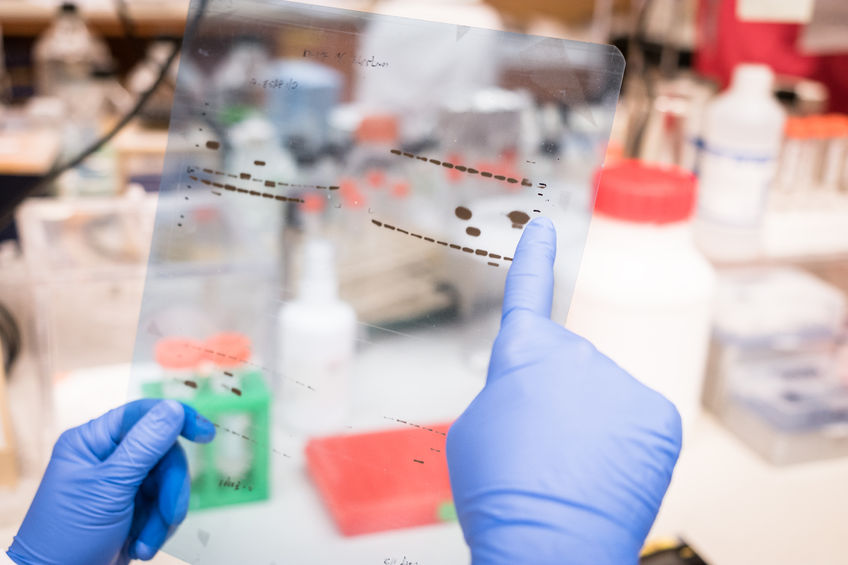 Michael Yee
Michael Yee
I have admired and read papers with gorgeous Western blots and beautifully aligned panels that neatly show expression levels and clear results. I have seen pages upon pages, slides upon slides, of them produced en masse by graduate students. But when I started performing Western blots (during my Master’s work in Cell and Molecular Biology), mine were anything but beautiful. While troubleshooting my initial blots, however, I found them to be good starting points and valuable learning experiences. With each of these experiences, I was challenged to not only understand the precise techniques but the bigger questions, reasonings, and context of the studies. My first lab needed Western blots anyway, so I leveraged them as a great introduction into the laboratory and its projects as a whole.
For my first experience with Western blotting, I was analyzing and comparing expression of histone post-translational modifications between C. elegans sperm and embryos. Our lab was interested in the overarching problem of male infertility, and the question was whether or not there were epigenetic marks that were consistently expressed between the two. Our lab had identified post-translational modifications via Multidimensional Protein Identification Technology (MudPIT)-mass spectrometric analysis. While this large data set was being analyzed, Western blot analyses were ongoing. I had detected the core histones in the samples, and focused on analyzing a few post-translational modifications of interest that were enriched as shown via MudPIT-mass spectrometric analysis.
For the full, published protocol, please refer to the paper for this study linked below. In summary, I collected sperm and embryo samples, then lysed and sonicated the cells to gain access to nuclear proteins and analyze histone contents. I made my own gels for SDS-PAGE, performed a wet transfer, incubated in primary and then secondary antibodies conjugated with HRP, used an enhanced chemiluminescent substrate, and analyzed with the Kodak reader. More can be seen regarding the full protocol and the findings that are now published here (Samson et al., 2014).
For my next experience with Western blotting, I was in another lab where we were analyzing the role of Protease-activated receptor-2 (PAR2), a G-protein coupled receptor (or 7-TMR) expressed on the cell membrane throughout the body, signaling via β-arrestins in regulating lung inflammation. In this case, the question was whether or not a synthetic, PAR2-activating, peptidomimetic ligand promotes signaling via β-arrestins in bronchioepithelial cells (BEAS-2B cell line). This question was relevant to studies of the role of this signaling axis in lung inflammation. The second question was whether or not this ligand promotes PAR2 signaling via β-arrestins in primary peripheral blood macrophage cells (PBMCs) isolated from asthmatics or non-asthmatics. This was relevant to addressing the clinical significance of PAR2 signaling and the role of β-arrestins in asthma. The readouts I was using for Western blot analysis consisted of β-arrestin expression levels and activation of cofilin, which is shown by dephosphorylation of cofilin at Ser3 and required a comparison of phosphorylated cofilin to total cofilin levels.
The difference with these blots was that we used secondary antibodies conjugated to infrared (IR) dyes and the Li-Cor Odyssey system. For the full and previously published protocol, please refer to the methods discussed in this paper (Zoudilova et al., 2007).
For my third experience with Western blots (later in the same laboratory), I was addressing whether or not there were endogenous proteases released by the lung that would activate PAR2 in an allergic response. In this case, mast cells have been shown to be involved in models of allergic asthma, so we decided to check whether or not mast cell tryptase was expressed or not. Here, I had collected bronchoalveolar lavage fluid that would contain secretions and cells from the lung of mice that were either treated with control or a fungal allergen. Then I had performed Western blot analysis using these samples, but we eventually ended up not pursuing this question further.
When I started in these labs, learning how to perform Western blots taught me how to take ownership of an experiment and project—to really understand the details, context, purpose, and background. Other labs might have needs for different experiments that require members to learn and eventually master various techniques—often through extensive and frustrating trial and error. Western blots just happened to act as this forcing function for me, and I learned through my experiences that lab research isn’t just about the specific technique at hand, but also the project as a whole. Western blots were my beautiful window into the larger questions at hand—the bigger picture, so to speak—and, ultimately, the real-world problems science solves.
Quartzy is the world’s No. 1 lab management platform. We help scientists easily organize orders, manage inventory, and save money. We’re free and always will be. Visit Quartzy.com or reach out at info@quartzy.com.
Interested in writing for The Q? Send us an email!
Share this:

mikecyee
Mike has a Ph.D. in Biomedical Sciences from the University of California, Riverside, a M.S. in Cell and Molecular Biology from San Francisco State University, and a B.A. in English from the University of California, Berkeley.
